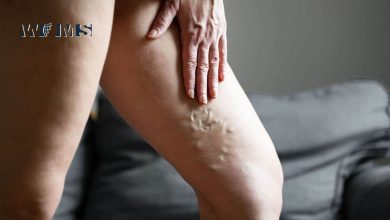Breaking Down Barriers: Innovations in Patient-Doctor Communication

Patient Doctor Communication
Patient-doctor communication is very important, especially in today’s world. It might even be more important than in days past. It is getting easier to do this in these technological times. There are many ways that a doctor can communicate with their patients.
Historically, a doctor would call their clients on the phone and communicate that way. If they only had a landline, this might be difficult if the client wasn’t at home or if they were on another call. Then cell phones made things easier for communication, as did other technological advances. Doctor answering services such as https://24x7doctorsansweringservice.com/ have also been a part of communication.
This article will give some top innovations when it comes to patient-doctor communication. It will help you to see how these innovations can help improve communication. You can also do more research to find even more innovations.
Innovations
Virtual Reality – This is another way to visit your doctor if you can’t visit them in the office. The client can get the treatment they need from the comfort of their own home. The patient is given VR glasses and works with a VR coach or doctor for their treatment. The client can speak to the doctor or coach about their concerns.
Virtual reality also allows the patient to work through mental health issues with their mental health provider. If a client is afraid of heights, for example, they can use the VR headset to overcome these fears. This has helped many people with their mental health issues. Patients can speak to their provider while they are working through their issues.
Artificial Intelligence – AI can help with communication and other factors in the medical office. AI can help to schedule your appointments and help with billing. It can also help to answer some common questions or concerns. This might not be as accurate as speaking to your doctor, but it can help answer some common questions.
AI can also help to direct you to the right person when you are calling your medical office. It can direct your calls so that the questions that you have go to the right person. This can save time and effort for you and the office. It can also save the office money from not having a real person answer the initial calls.
Internet – There are many technologies that connect directly to the internet and to your doctor to help communicate about your health. There are smart watches that you can wear that send your health information directly to your doctor. This can especially help cardiac clients.
There are smart watches and fitness trackers, along with other devices that can do this for you. This helps your doctor keep in constant contact with you and your device so that they can monitor you for any changes. This could help you to prevent a heart attack or get you more immediate care if you have one. It could also help with other medical issues.
Data Collection – Many offices are using technology to collect data that can track client trends. This allows doctors and other medical professionals to see how their patients are really doing and allows them to catch major medical issues before they happen. See here how technology can help data collection. This can help protect clients and keep them from having long hospital stays.
This data can also track the spread of disease and can allow medical professionals to have their clients avoid the disease with vaccines and other methods. This type of communication can help patients by keeping them well. It can also keep patients from being at the doctor’s office when there are major illnesses going around.
Lighting Control – Another way to help clients is to give them more control over the lighting in their hospital rooms. Studies show that lighter rooms help to improve a patient’s health during hospital stays. Because of this, clients have been given patient-controlled lighting systems to control the light in their rooms.
Studies have shown that this can help to regulate the circadian rhythms and help to reduce the stays of the patients. If medical professionals can help their clients to heal faster, they will use any method that can help them. This is good for patients and their doctors.
Individual Temperature – It is also important for clients to have more control over the temperature in their hospital room. Some patients tend to have warmer temperatures naturally and need their rooms cooler. Others need to have cooler temperatures to help their medical condition to improve.
Many hospitals have given control of the temperature in rooms over to the patients in the rooms. Again, studies have shown that if the client is more comfortable, they tend to heal more quickly. This is the goal of the medical team – to help their patients to have less time in the hospital and get healthy sooner.
Virtual Networks – Because patients can often be seen by many different doctors and other medical professionals, there can be a trend for miscommunication. Many doctors have turned to virtual networks. This helps connect the doctors and other medical professionals to break down the different silos of client data.
This can also allow doctors to virtually meet with other doctors in the treatment of their patients. For example, if a client has a skin care issue, their primary care provider can speak with a dermatologist and other professionals that may have something to do with their care. This can help them all to come up with a treatment plan for the patient.
Telemedicine – There are many clients who avoid making appointments to go see a doctor for many reasons. It could just be inconvenient for them, they may not have transportation to get there, or they may not feel well enough to get there. Telemedicine can help these patients to get the care that they need. They can see the doctor without having to leave their home.
This can be especially helpful to clients who live in rural areas where there is no nearby medical care. Pregnant women can have their appointments via telemedicine, so they get the regular care that they need. This can also be helpful for babies and young children to get their early appointments.
Chatbots – Medical centers can use chatbots to replace almost all the human interaction when it comes to billing and setting appointments. Many patients say that this needs to be done so that the process can be simplified. Many patients would rather “speak” with a chatbot than a real person to set appointments and to get information about billing.
Many clinics are turning to chatbots to satisfy their patients. They can set appointments, speak about billing issues, and give medication reminders. Patients won’t have to wait on hold until a real person gets on the line.
Feedback from Employees – Another way to improve communication is to have employees give feedback on how to improve medical facilities. Their feedback can help with technological advances, patient care, and other things within the organization that they work with. It can also help with patient-doctor communication by giving ideas on how to improve that.
Conclusion
There are many ways to improve patient-doctor communication in today’s world. This is important in the care of patients. Technology has helped to improve this throughout the years.




